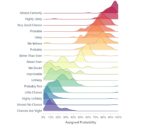
by tyler garrett | May 29, 2025 | Data Management
In today’s data-driven world, companies face increasing pressure to manage and leverage their data effectively. However, not all data management systems are created equal. If you’re a decision-maker navigating the nuanced differences between application-specific and enterprise-level data management strategies, you’re likely seeking clarity on what fits your organization best. Understanding the distinction between Application Data Management (ADM) and Enterprise Data Management (EDM) becomes a strategic imperative that can significantly influence the success of your data-related initiatives, business intelligence, and analytics efforts. While ADM ensures specific application performance, EDM holds the key to broader organizational success, scalability, and innovation. Let’s unpack how these two approaches differ and explore which aligns best with your business goals and data strategies, enabling stronger analytics and more insightful, data-driven decisions.
Understanding Application Data Management
Application Data Management focuses specifically on managing data for individual applications or systems. Its primary goal is optimizing data performance, reliability, and availability for specific, targeted use-cases. ADM strategies often address aspects such as data validation, storage management, caching mechanism, backups, application-specific analytics, and operational performance optimization. Typically, ADM is driven by application developers and product teams who understand the particular requirements, schema structures, and user interface interactions relevant to their single application landscape.
In practice, ADM offers precision and agility, giving teams the freedom to optimize and manage the data directly related to the functionality and user experience of their specific product or application. For instance, a CRM or ERP system may utilize ADM to streamline customer data, increase responsiveness, or deliver personalized user experiences. However, ADM projects generally remain siloed to specific application environments, lacking visibility into comprehensive enterprise-wide data performance implications. For smaller data operations or organizations focused on rapid, discrete development cycles, targeting customized ADM strategies can yield faster results while ensuring exceptional application-level user experiences, whether developing innovative interactive visualizations or efficiently handling multi-chart dashboards using interactive crossfiltering.
However, the ADM approach inherently carries risks, including data silos, inconsistent data governance across applications, duplicated efforts, and limitations in scaling data usage for broader analytical needs. Hence, while ADM ensures application-level success, it may complicate enterprise growth or analytics maturity if not thoughtfully coordinated with enterprise-level strategy.
Exploring the Scope of Enterprise Data Management
Enterprise Data Management, on the other hand, elevates data strategy, governance, and utilization beyond isolated application contexts to encompass an organization’s entire ecosystem of data assets. EDM emphasizes standardized processes, policies, data quality, consistency, and visibility across multiple applications, systems, and enterprise-wide analytical initiatives. This overarching view ensures data is reliable, accessible, secure, and scalable throughout the entire company.
Unlike ADM, EDM prioritizes data governance frameworks, comprehensive metadata management, master data management, data lineage visibility, and universally implemented quality standards. This centralized approach is especially important when organizations leverage their data assets to fuel tactical analytics projects like predicting client churn with open-source analytical tools or developing comprehensive notification systems for data pipeline statuses and alerts.
Implementing EDM ensures your organization leverages data more strategically while avoiding inefficiencies that arise from disconnected ADM initiatives. Particularly for businesses aiming for advanced analytics scenarios, robust AI capabilities, or complex data integration and ingestion processes, EDM frameworks can establish consistency that unlocks meaningful insights and actionable intelligence for better decision-making. Ensuring uniform adherence to data quality standards and unified governance across all data resources is critical to scalable, sustainable long-term success.
Comparing ADM and EDM: Which Approach Is Best?
Deciding whether to focus more on Application Data Management versus Enterprise Data Management depends heavily on your organization’s maturity, scale, complexity, strategic ambitions, and analytics-driven ambitions. Smaller enterprises, startups, or teams aiming for flexibility, agility and fast innovation within a specific application framework may initially get adequate benefit from ADM-centered approaches. Application-focused teams already engaged in developing sophisticated solutions may find ADM helpful when working with specialized visual analytics solutions like visualizing imbalanced class distributions within classification analytics or building focused, mission-critical applications suited to singular functions.
However, as organizations scale up, unlock larger datasets, or aim for integrated intelligence across multiple departments, Enterprise Data Management quickly becomes indispensable. Consistency, accuracy, integration capability, and enterprise-wide governance provide clear benefits such as holistic, comprehensive decision-making support and seamless analytics experiences, enabling complex predictive analytics, seamless pipeline processes, and enhanced collaborative decision-making. For organizations actively undergoing digital transformations or building advanced analytics infrastructures—leveraging solutions like operationalizing data skew detection in distributed processing workflows or managing data pipelines and distributions—EDM emerges as an essential strategic investment.
Typically, successful organizations leverage a hybrid combination. EDM and ADM strategies coexist and reinforce each other: flexible ADM optimization supports targeted, application-specific innovation, while comprehensive EDM ensures overall alignment, consistency, control, and systemic synergy.
The Right Tech Stack: Enabling ADM and EDM
Choosing appropriate technological solutions does much to empower effective ADM and EDM implementations. Application-specific data management tools might focus on quick setup, ease of customization, direct application connections, continuous integration pipelines, and specialized visualizations. For example, building advanced Tableau consulting services and utilizing specialized visualization tools can significantly simplify ADM-driven analytics workflows.
Conversely, EDM-oriented technology stacks integrate end-to-end data lifecycle management with rigorous data governance tools. More extensive data lakes, warehouses, and cloud-native platforms enable larger-scale data ingestion, transformation, and accessibility across multiple operational units or analytical workflows. Often, EDM-focused stacks leverage on-premise or hybrid cloud technology, harnessing AI and machine learning capabilities (recommendations around Python over Tableau Prep for robust data pipeline operations), comprehensive security protocols, and the capacity to handle massive datasets that fuel enterprise-wide data-driven transformational opportunities.
Ultimately, ensuring your chosen tech stacks align with organizational skillsets, competence, and long-term strategic goals helps facilitate successful ADM and EDM deployments, balancing localized agility and enterprise cohesion effectively.
Future-Proofing Data Management Strategy
Whether leaning initially towards ADM-centric rapid development or systematically implementing EDM frameworks, organizations must continuously reassess their data management strategies as they evolve. Given data science’s integral part in shaping modern business strategy, the role of data scientists continues to evolve. It becomes increasingly essential that organizations remain agile, adopting strategies flexible enough to integrate emerging best practices, processes, and innovations seamlessly.
Enterprises establishing effective hybrid models, where ADM and EDM interplay fluidly—application teams empowered by enterprise data policy coherence, broader governance standards, and shared frameworks—stand to gain long-term competitive advantages. Companies proactively investing in robust governance, advanced analytics, proactive performance monitoring, and data-powered transformative processes position themselves favorably amid future trends of increased data complexity, growing analytics prowess, and continuous technology evolution.
In essence, future-proofing your data management strategy involves thoughtful evaluation, adaptation, and careful orchestration across both application-specific and enterprise-wide data resources, enabled by confident alignment with relevant technology stacks, data governance frameworks, analytical infrastructure, and organizational goals.
Conclusion
Application Data Management and Enterprise Data Management each provide strategic value in distinct ways. By clearly understanding the differences and complementary roles of ADM and EDM, decision-makers can better strategize, maximizing technological investments and data-driven outcomes. A balanced, targeted approach ensures scalable innovation, insightful analytics capabilities, and effective, holistic governance that powers long-term success in our increasingly data-driven economy and society.
Thank you for your support, follow DEV3LOPCOM, LLC on LinkedIn and YouTube.

by tyler garrett | May 29, 2025 | Data Management
In today’s interconnected digital landscape, organizations frequently collaborate through data sharing agreements to drive innovation, analytics, and data-driven insights. While collaboration can power tremendous growth and competitive advantage, it also inherently carries risks – from data privacy breaches to loss of trust among partners and regulators alike. Implementing robust technical controls within your data sharing agreements will not only safeguard your sensitive data but also ensure your analytics and innovation efforts remain sustainable, compliant, and credible. Let’s dive deep into how you can strategically select and deploy the right technical controls to secure your data sharing agreements effectively and confidently.
Understanding Your Data Sharing Requirements and Risk Landscape
Before diving into technical controls, it’s essential to outline your organization’s unique data sharing requirements and assess the associated risks. Each collaboration has specific data governance needs depending upon data sensitivity, regulatory compliance requirements, and organizational risk tolerance levels. To craft an effective technical control implementation, you must clearly define the types of data involved, the intended use cases, access frequency, and transmission methods involved. Mapping out this baseline will guide your technical strategy toward ensuring stronger protection tailored for your collaboration goals.
Consider categorizing your data based on sensitivity and determining the level of access required for each collaborating party. Identify the gaps exposing data to potential risk — whether during transit between organizations, at rest within each entity, or during active processing phases. A clear understanding of these nuances will allow you to build a more comprehensive and customized data-sharing control implementation plan. Moreover, conducting initial risk assessments helps spotlight specific compliance policies such as GDPR, HIPAA, or industry-specific regulations, ensuring your technical solutions align seamlessly with the entire regulatory landscape.
Encryption and Secure Transmission of Shared Data
A foundational element in implementing technical controls within your data sharing agreement is robust encryption, providing a reliable safeguard for sensitive data exchanged among stakeholders. Encryption should adhere to industry standards such as AES-256 for data-at-rest and TLS for data-in-transit. Employing secure and trusted channels for transferring data reliably guards against interception or alteration of data. Determine the appropriate key management strategy to facilitate authentication, key rotation, and integrity of shared data.
When transmitting sensitive information, leveraging secure APIs backed by appropriate authentication mechanisms ensures protected, monitored, and verifiable data flows between collaborating entities. Consider using robust frameworks such as OAuth2 and secure XML or JSON standards while accessing databases or data lakes externally. For example, explore our guide on how to efficiently and securely send XML data to Google BigQuery using Node.js, which helps streamline secure data-sharing pipelines. These technical best practices provide assurances to your collaborating partners while shielding sensitive information throughout its lifecycle.
Implementing Granular Access Control Mechanisms
Access control lies at the heart of any successful technical implementation tailored for data sharing agreements. Implementing granular and meticulous access controls helps define exactly who can access the data, under what circumstances, and with which permissions. Applying the principle of least privilege minimizes the attack surface, limits unauthorized visibility, and reduces the likelihood of accidental disclosures or malicious breach attempts.
Database-level controls and role-based access control (RBAC) methodologies, available within leading platforms like PostgreSQL and MySQL, allow clear delineation and enforcement of data permissions aligned with internal and external stakeholder roles. Our team has extensive experience providing detailed guidance through comprehensive database setup strategies such as creating databases in MySQL Workbench or customized PostgreSQL consulting services customized to your organization’s security and collaboration requirements. Leveraging database-wide collaboration strategies ensures stakeholders have clearly defined roles that support secure, compliant, and mutually beneficial partnerships throughout the agreement’s lifecycle.
Dynamic and Scalable Data Pipelines for Secure Data Sharing
Managing data streams securely within collaborative practices usually requires resilient, flexible, and scalable data pipeline architectures. By implementing dynamic pipelines automatically generated using metadata definitions, stakeholders can securely integrate, manage, and transform data consistently, regardless of volume or complexity. Explore the latest innovative approaches to pipeline methodologies through our article on dynamic pipeline generation from metadata definitions. This method empowers stakeholders to easily customize the transformation rules and securely route data flows according to the latest compliance directives and sharing requirements.
Additionally, recent advancements in zeroETL architectures significantly streamline real-time analytics, dramatically simplifying data sharing implications created by overshadowing legacy frameworks, as detailed within our insightful article on ZeroETL architectures, the future of real-time analytics. Such infrastructure optimizations grant your organization real-time performance, enhanced visibility, higher reliability, and elevated security standards alongside simplified integration. This approach positions your shared data agreements to remain secure and agile in today’s constantly evolving analytics landscape.
Monitoring, Logging, and Auditing Data Sharing Activities
Continuous visibility into data-sharing activities ensures transparency, accountability, and compliance assurance. Through comprehensive monitoring, logging, and auditing implementations, technical decision-makers can proactively detect and address unusual or suspicious behaviors throughout the data-sharing lifecycle. Solutions that provide centralized analytics, like real-time performance metrics and targeted alerts based on established security baselines, further strengthen your defensive stance against unauthorized activities.
Implementing modern solutions such as observability-driven database management emphasizes not only reliability and performance, but also robust, actionable reporting capabilities. Our article on fostering cross-company database collaboration for observability and scalability provides substantial insights into securing and monitoring your shared data environments effectively. Utilizing powerful visualization techniques, such as density contour visualizations for multivariate distribution analysis, accelerates anomaly detection and decision-making preparedness across all parties involved in data sharing. Furthermore, visualization strategies can leverage techniques described in our guide on data visualization best practices to achieve clear, effective security and compliance dashboards.
Leveraging Advanced Analytics to Secure Data Sharing Agreements
Going beyond traditional reactive security, advanced analytics, predictive modeling, and machine learning offer opportunities for proactive protection. Leveraging predictive analytics enhances risk forecasting—enabling security teams to anticipate issues, prevent violations, and fortify data-sharing agreements proactively. Our comprehensive guide on leveraging predictive analytics for advanced management showcases real-world examples and best practices applicable to securing valuable information exchanges.
Moreover, understanding how to visualize uncertainty and model risk effectively helps stakeholders deeply appreciate the strength and limitations of shared data. Techniques outlined in our article on visualizing uncertainty and representing data confidence ensure greater stakeholder alignment and clarity within technical discussions. Additionally, choosing the right visualizations tailored for security monitoring is possible through informed decisions guided by expertise in effective charting, as featured in our resource: choosing the right chart type for your data. These proactive analytics strategies demonstrate the maturity, foresight, and shared responsibility inherent in a modern and secure data-sharing agreement.
Conclusion: Building Trust Through Technical Excellence
By strategically implementing robust technical controls to your data sharing agreements, you demonstrate your commitment to protecting both the integrity of your data and the trust of your collaborating partners. Employing encryption, ensuring strict access control, monitoring data pipelines effectively, adopting best-in-class analytics tools, and dynamically adjusting to emerging risks positions your business at the forefront of data security practices. Ready to begin your journey toward secure and innovative data sharing? By embracing strong technical foundations, your confident approach will earn trust, fuel innovation, and empower your organizational success today and beyond.
Thank you for your support, follow DEV3LOPCOM, LLC on LinkedIn and YouTube.

by tyler garrett | May 29, 2025 | Data Management
In today’s competitive landscape, businesses aiming to harness the true power of analytical insights must embrace temporal data governance. Structured management and governance of temporal data—historical records observed over intervals of time—have emerged as critical factors for gaining invaluable strategic intelligence. Organizations that skillfully leverage their historical data achieve clarity in decision-making, identify predictive patterns, and uncover hidden opportunities. Yet, without effective temporal data governance, historical data can become a tangled web of complexity, compromising accuracy, reliability, and ultimately strategic value. This article sheds light on temporal data governance, its importance, critical practices, and strategic methodologies that help business leaders transform complex historical data into actionable insights.
Why Temporal Data Governance Matters for Strategic Analysis
Historical data isn’t just a resource for occasional retrospection; it’s the lifeblood of ongoing strategic decision-making processes. Mismanagement of historical data risks distorting analytics and impeding genuine insight generation. Temporal governance ensures historical data retains value, reliability, and consistency over extended periods. Often, poorly governed data results in poorly performing analytics pipelines, cost overruns, and lost profitability opportunities. Consider inventory management: accurately analyzed historical data informs optimal inventory levels, reducing redundant stock and preventing costly shortages. Our previous analysis discusses the tangible impact of effectively maximizing profitability through optimized inventory levels, underscoring how historical patterns directly influence strategic financial outcomes.
Detailed temporal governance establishes clear frameworks for data collection intervals, storage, archival policies, provenance documentation, and analysis methodologies. Effective governance enables analysts and data scientists to extract consistent, repeatable insights from datasets to facilitate reliable regional comparisons and effective long-term strategy. In fact, our experience confirms that organizations achieving strategic clarity through historical analysis often prioritize expert MySQL consulting services, underpinning their temporal data governance through database optimization and management expertise.
Key Elements of Temporal Data Governance Strategy
Robust Data Provenance and Lineage Tracking
Effective temporal data governance begins with understanding where data originates and recording lineage throughout its lifecycle. Provenance solutions document source systems, transformations, analytics pipelines, and modifications over time. Accurate lineage significantly enhances confidence in historical analysis by enabling analysts to understand precisely how data evolved. Transparency around data lineage also simplifies troubleshooting and improves efficiency, particularly in large data operations.
Organizations we regularly consult gain considerable advantages by applying ETL methodologies to clean and transform messy data sets. Integrating a clear ETL strategy within the provenance documentation accelerates troubleshooting and streamlines transformations. As historical data quality improves, decision-makers develop greater confidence in the patterns and outcomes derived from analytics models.
Consistent, Well-structured Data Storage
A key element to enhancing historical analysis is establishing a consistent, reliable, efficient, and clearly structured data storage strategy. Temporal governance promotes standardized practices in schemas, categorization methods, indexing strategies, and partitioning schemes. Storing historical data in well-structured databases enhances retrieval speeds, simplifies complex temporal queries, and enables meaningful data visualization.
To achieve effectiveness, businesses should engage experienced data professionals skilled in creating tailored database strategies. Utilizing expertise like our MySQL consulting services, rigorous database design choices greatly enhance temporal data accessibility, accuracy, scalability, and efficiency. Moreover, governance-driven data storage standards reduce overall analytics costs by optimizing performance and simplifying long-term infrastructure management.
Analytics and Visualization Considerations for Historical Temporal Data
Using Visualization Tools for Genuine Historical Insight
Temporal analysis transcends simple bar charts and timelines. To derive strategic value, businesses must construct insightful executive dashboards and visualizations purpose-built for temporal analytics. Our previous work includes detailed steps for creating executive dashboards that drive real decisions, emphasizing controlled visualization practices specifically tailored to historical data complexity.
Visualizing temporal data facilitates trend discovery, pattern identification, and anomaly detection, enabling strategic responses to shifting conditions or potential threats. However, a faulty visualization strategy can mislead stakeholders. Consider reviewing our insights on fixing a failing dashboard strategy and how to eliminate harmful dashboards proactively—these guidelines validate the importance of continuous governance and careful planning in implementing effective historical visualization strategies.
Augmenting Insights with Innovation in Accessibility
Temporal data governance shouldn’t exist independently of accessibility considerations. If teams can’t easily consume historical insights due to obstacles such as visual impairment or ineffective representation, significant opportunities disappear. Forward-thinking organizations incorporate innovative methods such as accessible data visualization design and audio augmentation of data visualizations into their governance practices.
Through forward-looking accessibility measures, organizations democratize analytics, empowering wider teams to leverage historical insights effectively and inclusively. An accessible analytics culture increases user engagement, ensuring that governance strategies deliver tangible value from historical analytics to the entire company.
Advanced Techniques to Maximize Historical Data Value
Optimizing Data Operations with Strategic Governance
Effective temporal governance incorporates cutting-edge methodologies such as Apache Spark optimization to reduce infrastructure requirements while improving historical data processing speeds and reliability. Employing best practices shared within our extensive guide on optimizing Spark jobs directly benefits governance initiatives by boosting efficiency, reliability, and reducing cost overhead.
In addition, by conducting frequent, real-time proof-of-concepts with stakeholders, companies greatly enhance their temporal analytics outcomes. Our work on building proof-of-concepts with clients in real-time clearly illustrates how iterative collaboration drives faster feedback loops, alignment, and strategic adoption of temporal analytics projects. Informed decision-makers can rapidly course-correct, ensuring historical analysis delivers focused, highly-manageable insights.
Data Talent Management Aligned with Temporal Governance
Although data scientists offer invaluable research and advanced analytics expertise, not every analytics initiative initially requires advanced modeling. Companies commonly misallocate specialized analytics resources where a strategic data hire might produce greater initial utility. It’s crucial to understand why your first data hire shouldn’t be a data scientist; temporal analytics improvement often stems from effective data governance skillsets that focus on quality, cleanliness, efficiency, and repeatable processes.
By aligning governance strategy with team building, organizations position themselves to effectively leverage historical insights from day one. Prioritizing talent adept at managing data governance and strategic oversight ensures historical datasets remain trustworthy and strategically actionable throughout the analytics lifecycle.
Conclusion: Temporal Data Governance as a Strategic Multiplier
Implementing sophisticated temporal data governance empowers decision-makers to adeptly transform historical complexity and ambiguity into a strategic analytical advantage. Data governance today isn’t merely compliance-based policy formulation—it’s a proactive, transformative strategy capable of ensuring businesses obtain deeper visibility, superior decision-making clarity, and reliable forecasting capabilities from historical analytics.
From optimized database management through skilled consulting services to ongoing visualization enhancements and innovative accessibility initiatives, robust temporal governance amplifies the value of historical data across entire analytical ecosystems. The businesses choosing to embrace proactive governance are undoubtedly best positioned to thrive and consistently outperform their competitors going forward.
Thank you for your support, follow DEV3LOPCOM, LLC on LinkedIn and YouTube.

by tyler garrett | May 29, 2025 | Data Management
In today’s business landscape, data holds supreme value, forming the backbone of critical decision-making processes. Yet, merely collecting vast amounts of data doesn’t automatically translate into actionable insights or improved operational efficiency. Companies often grapple with inconsistencies, inaccuracies, and unreliability throughout their data pipelines. To bridge the gap between raw data and strategic insights, leaders must adopt a smarter approach leveraging contextual quality rules based on data usage patterns. By aligning data quality methods closely with real-world scenarios of data consumption, organizations can unlock more meaningful insights, reduce risk, and significantly boost overall productivity. Let’s dive deeper into setting up these sophisticated, data-driven quality rules and explore their benefits in enhancing decision-making capabilities across industries.
Why Contextual Data Quality Matters in Modern Analytics
Modern analytics go beyond simple static dashboards and basic reporting; they increasingly employ high-powered predictive models, AI-driven tools, and real-time interactive visualizations. With analytics now deeply embedded within day-to-day business workflows and decision-making processes, data quality becomes a critical success factor. Simple data quality checks are no longer enough—contextual quality rules take the understanding of context, patterns, and real-world usage to much deeper levels, ensuring that businesses avoid costly errors and missed opportunities.
Consider a critical use case in online retail analytics: accurate inventory management and customer experience enhancement. Instead of simply checking data for completeness and structural integrity, contextual rules can contextualize product data based on usage frequency and patterns of seasonal demand. Applying such domain-specific rules countermands oversights that static checks fail to uncover. Likewise, enterprises leveraging cloud platforms like Amazon Redshift benefit significantly from tailored data quality rules, aligning seamlessly with analytical workloads. For more insights about achieving efficiency and accuracy in your analytics environment, explore our Amazon Redshift consulting services.
With contextual data quality rules, companies proactively ensure data reliability and relevance before costly or critical decisions are made—ultimately reducing risks and improving the ROI of their data analytics investments.
Identifying Data Usage Patterns: The Foundation of Contextual Quality Rules
No two companies use data identically. Therefore, understanding data usage patterns forms the cornerstone for contextual quality rules. Organizations need to study how data moves through their infrastructure, how stakeholders utilize the data, and how specific metrics consistently influence decisions.
Data usage pattern assessment involves multiple aspects such as frequency analysis, reporting requirements, visualization preferences, and even granular detail sensitivity. For instance, if stakeholders frequently utilize minimum, maximum, average, or summation values during their analytical explorations, this indicates a clear scenario for applying contextual quality rules centered around aggregate functions. To better understand the strategic use of aggregates, review our guide on harnessing aggregate functions in SQL.
Furthermore, comprehensively mapping how users interact with data allows organizations to detect both habitual analysis methods and less visible underlying patterns. For example, geospatial reliance might demand specialized data quality methods to validate geographical accuracy. In such scenarios, data specialists should consider contextual rules tailored for applications like cartogram visualizations, ensuring reliable distortion of data as described in our detailed exploration of cartograms for geospatial data visualization.
By diligently mapping these unique data journeys, companies create the crucial foundation upon which contextual quality rules stand—ultimately minimizing potential analytics pitfalls and unlocking robust business intelligence capabilities.
Using Technological Standards to Enforce Consistency in Data Quality
Contextual data quality rules must integrate seamlessly with the technological tools and standards an organization already uses. Accessing and enforcing strategic data processes depends on utilizing the appropriate platforms and visualization tools favored by internal teams.
Organizations typically depend on tools such as Tableau Desktop for real-time visualization needs. Implementing contextual quality rules that integrate directly into Tableau can lead to immediate business transparency improvements and data accuracy guarantees. Our step-by-step guide on how to easily install Tableau Desktop may be invaluable for teams upgrading or implementing visualization capabilities.
Moreover, contextual quality rules should also consider enterprise SaaS reporting tools. By embedding usage-pattern-based quality checks into SaaS reporting solutions, businesses can achieve significantly improved transparency while optimizing budgetary investments. To maximize business intelligence spend efficiency, review our approach to improving ROI on reporting SaaS software.
Effective contextual data quality frameworks thrive when closely interwoven with existing functional programming paradigms embedded within your architecture. Ensuring your contextual rules adhere consistently to established data transformation logic ensures long-term maintainability and scalability. To further explore how engineering teams leverage programming paradigms effectively, see our discussion on functional programming paradigms in data transformation logic.
Enhancing Decision-Making Through Contextual Rule Application
Businesses adopting contextual quality rules based on data usage patterns inevitably realize enhanced decision-making. Reliable, accurate data delivered at key junctures empowers leaders with confidence, enabling strategies rooted in data-driven evidence rather than gut instinct alone.
Contextual quality rules enable sophisticated approaches like causal inference modeling, drastically improving decision-making accuracy. As explained in our thorough breakdown of causal inference frameworks for business decisions, these advanced analytical models rely heavily on clean, contextually validated data, assuring executives the accuracy to predict potential outcomes and mitigate costly missteps efficiently.
Additionally, considering visualization preferences in contextual rules can significantly boost analytical clarity and speed of business response. Insightful visualizations lead to quicker comprehension—and thus quicker action. To learn about available market-leading visualization tools complementing data quality rules, review our coverage on popular visualization products for data analysis.
By streamlining contextual data quality management, companies facilitate data consumption, translating directly into superior business insight and decision-making agility. The result: measurable business growth and competitive advantages in today’s highly driven data economy.
Future-Proofing Data Quality with AI and Innovation
Emerging technologies like artificial intelligence dramatically enhance traditional approaches to implementing contextual data quality rules. Machine learning algorithms excel in discovering intricate data patterns that might be difficult or time-consuming for human analysts to detect, dramatically improving the accuracy, timeliness, and strategic applicability of analytics.
Future-oriented companies strategically leverage next-generation AI tools to continuously refine their contextual quality rules based on evolving data usage patterns. AI-driven quality checks automatically adjust as business requirements and data patterns evolve, providing greater flexibility and responsiveness versus rigid, conventional data governance models. For a deeper look at how leading firms use innovative technologies, see our perspective on AI-powered tools transforming decision-making processes.
Additionally, organizations that enrich their analytics culture with advanced, context-sensitive quality management frameworks inherently promote continual learning and innovation. This proactive strategy enables teams to anticipate shifts in global market dynamics, customer behavioral trends, and operational effectiveness models—rather than merely reacting after the fact. To better understand the extensive business advantages gained from intelligently leveraging data, explore our detailed guide on business growth driven by data analytics.
By embedding innovation into their contextual data management, enterprises ensure they remain competitive, agile, and resilient in a rapidly digitizing world.
Conclusion: Contextual Rules for a Smarter Analytics Strategy
Adopting contextual quality rules based explicitly on data usage patterns positions organizations strategically in an analytics-driven marketplace. By linking analytical rigor, technological standards, and actionable business contexts, leaders can dramatically enhance the quality and reliability of their data insights. Embracing this data-driven paradigm ensures accuracy, consistency, and clarity in every decision you make, allowing you to create sustained competitive advantage and business growth.
Are you ready to elevate your analytics strategy with contextual data quality management? Partnering with data and analytics experts can guide you on a seamless journey towards intelligent quality control frameworks. Reach out today and unlock your organization’s true analytical potential.
Thank you for your support, follow DEV3LOPCOM, LLC on LinkedIn and YouTube.

by tyler garrett | May 29, 2025 | Data Management
In today’s data-driven landscape, effective data management isn’t just about securing data—it’s about strategically classifying and managing data resources to maximize their potential. Implementing a tiered data classification approach offers businesses the clarity, security, and performance optimization needed to leverage data as an asset rather than merely maintaining it as an operational necessity. Think about data as your organization’s digital fuel—proper classification ensures that high-value data is treated with precision, efficiency, and security, while less-critical assets don’t drain valuable resources. Whether you’re aiming to enhance compliance, boost analytics efficiency, or drive innovation through precise data handling, embracing a tiered classification strategy positions you at the forefront of responsible and competitive data management.
Why Implement a Tiered Data Classification System?
The sheer volume and variety of data generated by modern enterprises make it crucial to have structured classification frameworks. Without proper classification, organizations waste valuable time, resources, and workflow efficiency by handling all data equally. A tiered data classification system brings strategic hierarchies that offer tailored solutions for data access, protection, and utilization. By clearly delineating levels of sensitivity and operational relevance, businesses can allocate their resources more effectively, focusing higher security measures and advanced analytics on high-value data, while streamlining processes for less-sensitive datasets.
Implementation of a robust classification system is also indispensable when meeting regulatory compliance standards. Industries governed by strict data privacy laws require organizations to demonstrate their ability to protect and manage data in a transparent, controlled manner. A clear classification system facilitates compliance audits, simplifies data governance tasks, and enhances organizational credibility.
Furthermore, tiered data classification directly supports advanced predictive analytics. For instance, it enables targeted, precise data analysis to minimize downtime and boost productivity. Analysts rely heavily on confidently classified, accurate data inputs—ensuring that patterns observed and insights generated remain actionable, relevant, and trustworthy for critical business decisions.
Understanding Key Tiers Within the Data Classification System
When developing a tiered data classification system, it’s important to clearly identify and articulate the various tiers. Typically, a robust data strategy includes three primary tiers: critical, sensitive, and general.
Critical Data: Highest Tier
Critical data refers to data assets whose compromise or loss could lead to significant operational disruptions, severe reputational damage, or regulatory penalties. Examples include confidential customer payment information, intellectual property, and highly sensitive financial data. This tier requires extensive protective controls, consistent monitoring, and high-performance storage solutions optimized for rapid accessibility and robust recovery mechanisms.
In handling critical data, organizations often implement sophisticated access controls, audit logging, encryption, and strict data management policies. Leveraging innovative techniques like isomorphic data processing, businesses can enhance uniform data flows between client and server while maintaining critical data safeguards.
Sensitive Data: Intermediate Tier
Sensitive data involves information that, while less critical than the highest-tier data, still demands vigilant protection due to concerns around personal privacy, internal confidentiality, or competitive importance. This often includes personal identifying information (PII), customer relationship management (CRM) data, employee records, internal analytics, and strategic insights from analytics processes like historical sales analysis to forecast future demand.
The management of sensitive data involves structured data governance practices, role-based access policies, encryption during data storage and transfer, alongside scheduled audits. Establishing clear accountability helps organizations maintain continuous compliance with relevant regulatory data protection requirements.
General Data: Lower Tier
The general tier consists of less sensitive, public, or commonly accessible data that organizations regularly process and utilize. While less strictly controlled, properly managing this data tier contributes significantly to cost efficiency, freeing up organizational resources that remain critical for higher-value datasets.
Although less stringent controls characterize this tier, regular consolidation, archiving procedures, periodic data quality checks, and backup routines help maintain healthy analytics ecosystems. Organizations can leverage advanced analytical techniques, such as ephemeral computing for burst analytics workloads, offering flexible and scalable processing resources matched perfectly to this data layer’s various use-cases.
Steps for Successfully Implementing a Tiered Data Classification Framework
A successful data classification journey requires clearly defined steps and robust communication across teams. Here’s a roadmap:
1. Identify Data Assets and Evaluate Current State
Begin by cataloging your data inventory and thoroughly understanding your organization’s existing data landscape. Evaluate current data handling procedures, storage architectures, and analytics pipelines. This assessment influences decisions regarding technology investments—such as data warehouses or analytics solutions—and highlights specific areas requiring tailored strategies. Expert data warehousing consulting services can help organizations effectively identify existing architectures and implement meaningful enhancement strategies consistent with business objectives.
2. Define Clear Criteria for Data Tiers
Clarify explicit classification criteria for data across the enterprise, actively involving data officers, compliance specialists, and users. Establish clear data sensitivity levels, assessing risk exposure, regulatory considerations, analytics potential, and performance impacts. By formulating explicit guidelines for each data tier, you create clarity for stakeholders, minimize ambiguity, and empower secure, efficient, and strategic data interactions.
3. Leverage Automated Processes Wherever Possible
Automation facilitates consistent and reliable classification processes at speed and scale. Solutions implementing automated classification primarily consult clear, well-defined business rules. Organizations particularly benefit from innovative approaches such as recursive materialized view patterns for efficient analytics hierarchies, providing optimized categorization and near-real-time insights into enterprise-wide data asset usage.
4. Establish Advanced Logging and Oversight for Transparent Data Transformations
Transparency and accountability are vital in maintaining a successful classification system. Implement auditing, logs, and monitoring functionalities to facilitate visibility into data flows and transformations across systems. Strategic adoption of technologies such as explainable computation graphs can further enhance transparency, accelerating debugging and optimizing future analytics workflows.
Overcoming Common Challenges in Data Classification System Implementation
When transitioning from unstructured, ad-hoc practices to a systematic approach, challenges inevitably occur. Awareness of these obstacles allows early strategic planning to mitigate difficulties. Common challenges include resistance to change, inconsistent data policies across the organization, outdated infrastructure or software, and suboptimal integration across analytics pipelines.
By proactively addressing these common pitfalls, organizations implement strategies such as effective employee training, streamlined integration strategies, and comprehensive testing approaches leveraging data pipeline mocks for accurate validation before full-scale adoption. Additionally, adopting tactical solutions like partial processing recovery to resume failed pipeline steps ensures uninterrupted analytics insights and stability throughout system implementation.
Finally, when managing multiple users and workgroups sharing resources and data pipelines, organizations benefit significantly from understanding multi-tenant resource allocation in shared processing environments. Ensuring robust allocation and isolation strategies safeguards against performance degradation and optimizes resource usage, significantly enhancing the overall enterprise data experience.
Conclusion: Achieving Strategic Advantage With Tiered Classification
Implementing a tiered data classification system propels an organization toward data-driven excellence by aligning resource investments according to data value, strategic relevance, and regulatory importance. This thoughtful approach allows businesses to maximize analytics insights, enhance data security, and streamline compliance practices. Ultimately, effective data classification creates clear strategic advantages needed to accelerate organizational innovation, productivity, and success in the increasingly competitive digital landscape.
Tags: Data Classification, Data Management, Analytics Strategy, Data Compliance, Data Security, Digital Transformation
Thank you for your support, follow DEV3LOPCOM, LLC on LinkedIn and YouTube.























